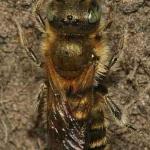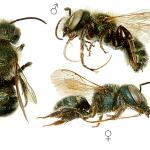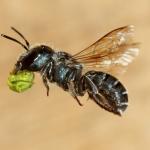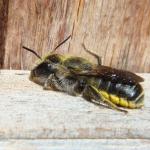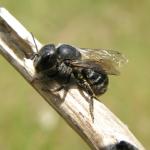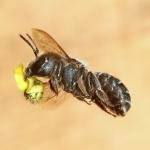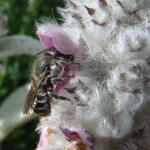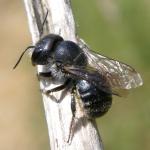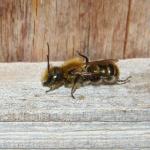Apis aenea LINNAEUS 1758; Apis superbus HARRIS 1776; Apis muraria RETZIUS 1783; Apis cuprea GEOFFROY, 1785; Andrena cupraria WALCKENAER 1802; Osmia purpurea CRESSON 1864; Osmia rustica CRESSON 1864; Osmia melanippa SPINOLA 1808; Osmia dutti COCKERELL 1922; Apis cyanea FABRICIUS 1793
Widely distributed in England and Wales as far north as Westmorland. Locally common but rarely abundant. Not known from Ireland or the Channel Islands. An Holarctic species, occurring throughout much of Europe from southern Fennoscandia southwards to the Mediterranean, and east to Greece. Also North Africa, central Asia, and North America.
Occurs both on the coast and inland, including woodland and private gardens.
Apparently bivoltine in Britain, flying from mid April or May to late July, and again in August. Saunders (1877) collected a male in West Sussex in late October (though this may have been either prematurely developed, or a very late emergence). Regularly bivoltine in France (Tasei 1972) and partly so in The Netherlands (Peeters, Raemakers & Smit 1999).
Nests are constructed within existing cavities, including insect exit burrows in dead wood, crevices in masonry, and trap-nests designed as nesting sites for various bees and wasps (see Krombein 1969; Free & Williams 1970; Raw 1974; O'Toole 2001). Cell partitions and the closing plug are manufactured from masticated leaf sections (leaf mastic). The winter is spent as diapausing adults within their intact cocoons. Nests and life-history are described by Grandi (1961), Krombein (1967), and Westrich (1989).
Included are: bird's-foot-trefoil (Lotus corniculatus), bramble (Rubus fruticosus agg.), cat-mint (Nepeta cataria), common knapweed (Centaurea nigra), germander speedwell (Veronica chamaedrys), ground-ivy (Glechoma hederacea), smooth hawk's-beard (Crepis capillaris) and snapdragon (Antirrhinum sp.).
Occupied cocoons of the sapygiid wasp Sapyga quinquepunctata have been recovered from a nest of O. caerulescens (Hallett 1920, 1928). There are British specimens of this wasp in the NHML which were reared from a nest of this bee.
2005.
(Website text proofed: February 2012)


